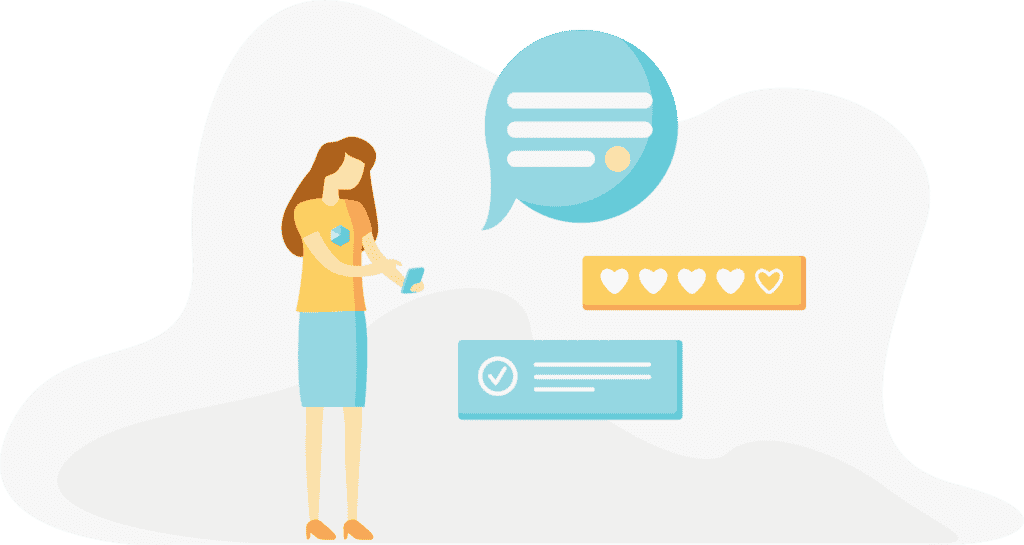Employee communication is about sharing ideas and information between the workforce and the management of an organization. Effective employee communication is essential to the success of the overall business, as it can improve productivity, reduce absenteeism, and increase employee engagement.
Traditional workplace communication methods may have worked well in the past — management would create memos, documents, policies, and procedures and would distribute them to the employees.
But nowadays email, instant messaging, and social media have dramatically changed how we communicate in the business world, and these channels have permanently altered the way employee communication is done. Employee communication is now a two-way street in many organizations.
New methods of bottom-up communication now allow employees to become engaged, influenced, and informed through different employee communication tools like intranets, newsfeeds, or even social media. That changed the way we perceive employee communication and its definition.
Employee communication is now a network where you exchange ideas, opinions, and feedback with and among employees to create a collaborative work environment to achieve the goals co-created by the management and the employees.

Top Employee Communication Benefits
Employee communication has changed over the years. It went from predominantly face-to-face communication in the past, to now where information is disseminated through online channels.
It is often said that the average human’s attention span is shorter than the attention span of a goldfish. This means that conveying a message in a concise, compelling, and simple way has become imperative in employee communication.
It’s important for businesses to prioritize effective employee communication. To do this, companies need to prioritize employee benefits communication, decision support tools, and internal communication.
Some of the benefits of improving employee communication in the workplace include:
- Improved job satisfaction
- Better employee performance
- Increased health and safety in the workplace
- Better management-employee relations
With that in mind, we have created the five pillars of employee communication.
The Five Pillars of Employee Communication
1. Upskill Your Employees Through Micro-Learning
Gone are the days of hefty employee handbooks and long emails. The communication culture these days is shortened up to a point where many of us no longer use words to communicate — in their place we rely on memes, smiley faces, stickers, and GIFs.
The average human attention span is now down to a mere eight seconds, so it’s important to keep the communication short and concise.

But how do you condense the information in a 30-page long handbook into bite-sized pieces that employees can easily read and understand?
The solution to this problem came in the form of short, online courses.
Traditionally, online courses had an abysmal completion rate, with the main problem being the length of the videos. In response, short, focused videos have become increasingly popular and are now commonly used for micro-learning.
Micro-learning is about focusing on a small part of a message and conveying it in a clear and concise manner. The videos became shorter and more engaging, and that increased the average completion rates.
One company, Mindvalley, had an increase in course completion by 800% after implementing micro-learning.
Micro-learning is one of the pillars of employee communication and that’s why Beekeeper offers integration with the micro-learning platform, MobieTrain, which is a mobile-first micro-learning platform.
But not everyone communicates the same way, and that’s why it’s vital to adjust communication channels so that the message gets through. That brings us to our second pillar.
2. Employee Communication Best Practices — Take a Multi-Channel Approach
It’s essential to find different ways to convey the same message if you want all your employees to understand and internalize your internal communications.
Some employees may prefer email, while others may want a phone call, while a third group of employees may want face-to-face interaction. A fourth group (particularly millennials) might like something we do at Beekeeper— secure communication through a mobile app.
It’s the business leader’s responsibility to take the message and make sure that everyone in the organization understands it. This requires different communication channels to ensure you reach every employee.
One channel that has been rising in popularity is employee communication apps. These apps are an easy way to strengthen the bonds between your employees and the core values of an organization.
Personalizing the message means that the employees receive messages that genuinely matter to them in a format they are comfortable with. And makes the communication more relevant, and it invites active participation from employees, which can increase their engagement levels drastically.
3. Increase Engagement Through Clear, Concise Messaging
It’s always better to be clear and concise in your message so that everyone easily understands it.
The average employee receives 121 emails a day, so it can be difficult to get people’s attention. And because of their short attention spans, getting through all the noise and connecting with employees is becoming a challenge for managers.
One of the ways to overcome this challenge is through employee communication applications. Most people check their phones around 150 times a day. If a notification comes from the employee communication app, they will know that it isn’t a random message, but something work-related and important.
90% of all text messages are read within three minutes of receiving them. So push notifications through an employee app are a quick and easy way to connect with your mobile workforce.
4. Use Gamification Elements to Track & Measure the Impact of Your Message
“You do what you track and you improve what you measure.” That was the quote from Peter Drucker, one of the most notorious management masterminds of the 20th century. He meant that if you want to have great employee communication, it isn’t enough just to send emails and have yearly events.
It’s about investing in a sustainable infrastructure like employee communication tools, apps, and software to provide systematic support toward that goal.
And once the system is there, the proper way to manage it is to measure and track your progress in order to continuously improve employee communication.
One way to do this is to implement gamification elements in your employee communication.
Rewarding behavior that contributes to effective employee communication will improve your culture by reinforcing appropriate behaviors. And gamification elements such as leaderboards, reward & recognition programs will promote the behaviors you want to see in your workforce.
5. Use Repetition to Align Team Members Around a Shared Message
“Repetition is the mother of all knowledge.” And when you consider today’s state of information overload, the message you’re trying to send can be quite easily lost in the noise.
People forget around 50% of the information they hear within the hour, around 70% in 24 hours, and 90% of it within a week.
On average, people need to hear a message around seven times before they act on it.
To be memorable, your message must be concise, clear, and repeated multiple times. But don’t make the mistake of cramming too much information in your message.
As a business leader, it’s important to lead by example and reinforce the key message.
Repetition is essential when it comes to employee communication. It’s how you ensure everyone receives, acts, and “pulls the boat” in the same direction.

Why Apps Matter for Employee Communication
Today’s employee communication requires a fast and easy-to-access approach.
Around 70% of employees want the company they work for to have the same level of technology they use in their personal lives. Apps matter in an employee’s personal life because they fix problems, answer questions, and address needs. And they can do the same (and more) in the workplace.
Apps allow businesses to:
- Help employees be more productive
- Give access to questions and answers from experienced team members
- Help you coordinate projects within teams
- Break down communication barriers through instant translation
- Provide fresh updates in a fast and easy-to-access way
- Make every member feel like a part of the organization by including everyone in the communication
- Aid in the decision-making process
- Supply necessary information to the right employee at the right time
Tips for Using an Employee Communication App
Apps are a great way to effectively communicate with your employees. In order to ensure that your employee communication app is successful, keep these three tips in mind:
1. Make Sure It’s Easy to Use
Make sure that the platform is easy to use to maximize adoption by everyone. If it’s difficult for employees to learn how to use the platform, then it will be almost impossible to get them to use it regularly.
2. Create a Single Source of Truth
By having a dedicated employee communication platform, you can create a single source of truth by only using one app for employee communication. If you use multiple platforms for employee communication, then you’re risking the “game of telephone” effect where a message can vastly change through different platforms.
3. Don’t Forget the Stickiness Factor
Make sure that you plan your content ahead of time so your employees always have fresh, new content to read which will increase the stickiness of the application. If you make sure that there is always something new to read on the platform, then your employees will start opening the application frequently and will create a habit out of it. That will ensure that the message is seen and read by all employees.
Common Use Cases for Employee Communication Apps
The use cases of employee communication applications are virtually endless. But here are a few of our favs.
- Confirmation campaigns
- Posting insights and updates on production schedules
- Posing questions to coworkers for advice and guidelines
- Sharing company-wide updates
- Sending pulse surveys
- Sharing shift schedules
Beekeeper even offers an integration that allows employees to share and vote on ideas— Innovation app.
Where the Five Pillars of Employee Communication Connect
By implementing all five pillars of employee communication, your internal communications will reach more employees in less time, and be more easily understood by your workforce.
Employee satisfaction will also improve, and your employer brand will become more attractive to top talent.
Employee communication has changed over the years, so that’s why we created a blueprint to help companies achieve a unified and effective internal communication plan.







